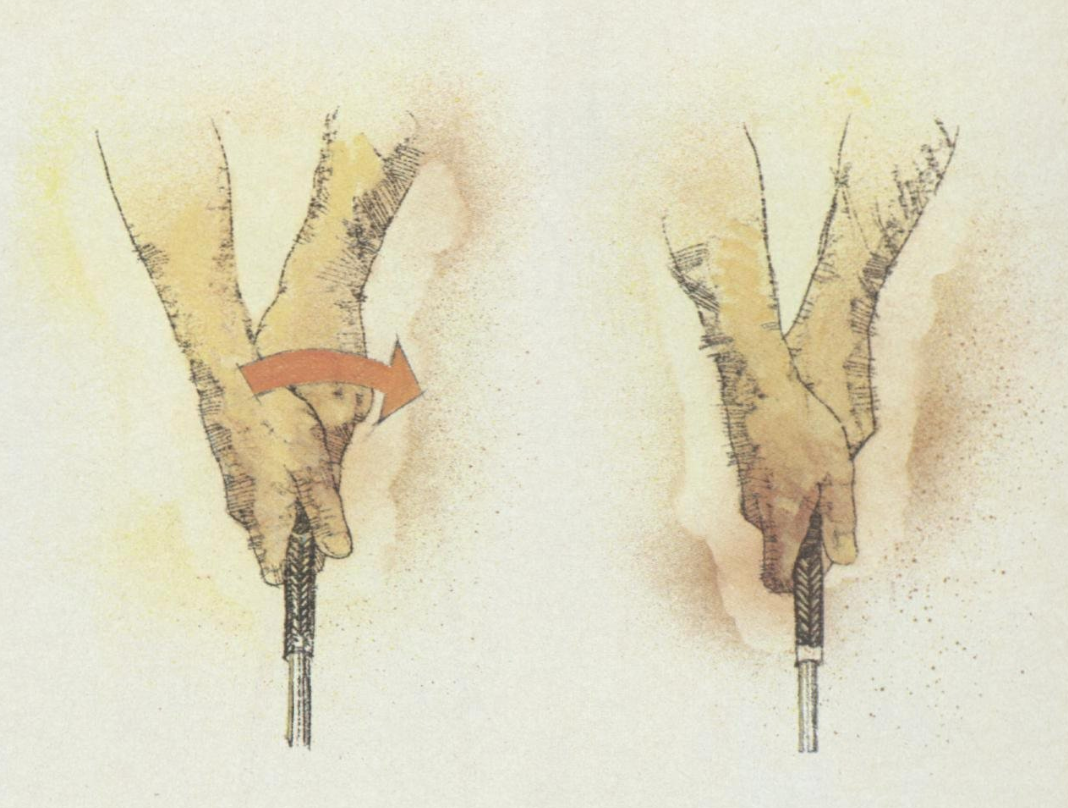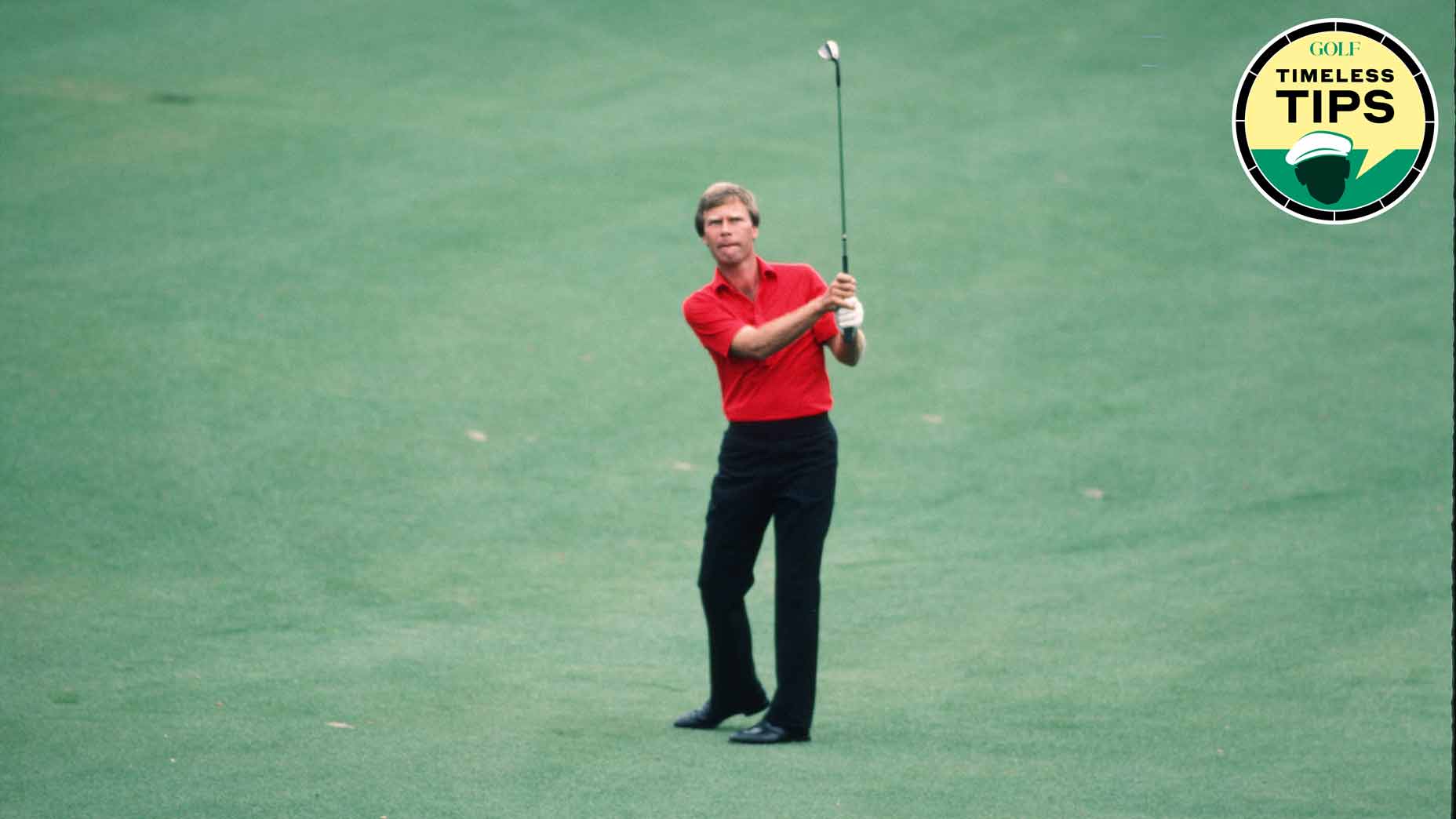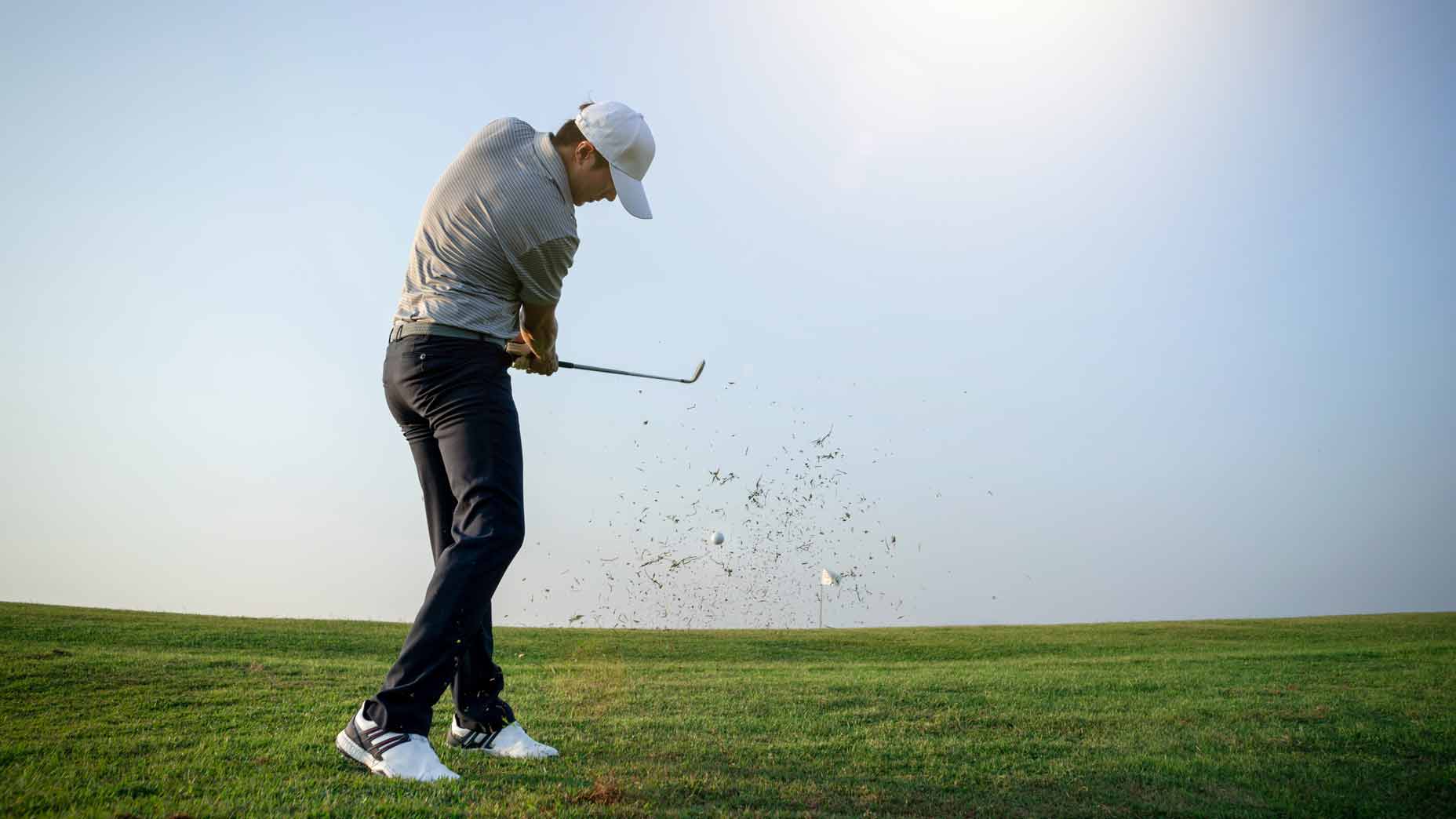Golf instruction is ever-evolving, but the best advice stands the test of time. In GOLF.com’s new series, Timeless Tips, we’re highlighting some of the greatest advice teachers and players have dispensed in the pages of GOLF Magazine. Today, we look back at Ben Crenshaw’s tips for hitting three different types of flop shots from our June 1984 issue. For unlimited access to the full GOLF Magazine digital archive, join InsideGOLF today; you’ll enjoy $140 of value for only $39.99/year.
Power might be the name of the game in the current era of golf, but that doesn’t mean you don’t need finesse shots. If you want to be a complete golfer, you’ve got to know when to dial it back and use your touch.
One of the most important finesse shots you can have in your bag is a flop shot. Sometimes, when you’re short-sided around the green or there are obstacles in your way, you’ll need to be able to get the ball up in the air quickly only to come back to earth and land softly.
Flop shots are made to look easy by the pros, but if executed incorrectly they can have disastrous results. If you want to hit the flop shot consistently, you’ll need to perfect the technique.
There isn’t just one way to hit a flop shot, though. Certain situations call for slight variations of the shot. And in today’s edition of Timeless Tips, Ben Crenshaw shares the secrets for hitting three different kinda of flop shots.
How to hit 3 different flop shots
You’ve seen the Tour pros play the cut shot — that high, soft floater that climbs over the tall tree, clears the greenside bunker and sits next to the pin like a dog next to a fireplace. And you’ve probably said, “‘I wish I could do that.”
Well, you can. The cut shot is actually one of the easiest finesse shots in golf. After all, the basic motion, an out-to-in cut across the ball, is the same swing path that creates a slice — and everyone knows how to slice.
The fact is, with a good cushiony lie, the proper equipment and a few of the tricks I’ve outlined here, you can play not just one but three cut shots, each with a different steepness of trajectory.
Basic cut
Let’s say you’re in light rough and you need to pitch the ball over a bunker to a tight pin position. Begin by taking a weak grip on your wedge. (The third wedge, with the most loft, is the best club for this situation. When the rough is thick, the heavy-flanged sand wedge is preferable.) Weaken your grip by positioning both hands about an eighth of a turn counterclockwise from their normal position on the club. For most people this will mean the Vs formed by the thumbs and forefingers point at the chin. This grip will help prevent your right hand from rolling over your left at impact, thus closing the clubface and taking loft off the shot.

Your stance should be very open, with your left foot pulled back from the target line so that an imaginary line connecting your toes would point about 30 degrees left of your intended target. With this open stance your right hip will obstruct a normal swing; instead, you’ll have to swing the club on a more outward and upward path, which is exactly what the cut shot demands.
Your weight should be about three quarters on the right side, and, as you settle into the final address position, you should have the feeling that you’re getting “under” the ball.
Make any big swing alterations, except to break the wrists quickly and markedly on the backswing. Your wrists and hands should have a “live” feeling during the swing. Take a full backswing for a long, high cut (up to 100 yards) and a partial swing for a quick-rising, short shot such as the pitch over the bunker. Be sure that the length of your follow-through equals the length of your backswing.
Steep cut
Now let’s say you’ve stymied yourself behind a small tree. You could play to the left or right of it, but that would not get you to the green. Still, to clear the tree, you need a shot that rises very, very quickly.
‘We call it a Phil’: How to hit this flop shot, according to Phil MickelsonBy: Nick Piastowski
The answer is to steepen the trajectory of the basic cut by making a couple of small adjustments. First, lay back the face of your wedge. As you set it behind the ball, swivel the blade until it points about 20 degrees right of your target and is lying nearly flat on its back. When you take your grip, rotate your hands another eighth of a turn counterclockwise, for further insurance against the right-hand rollover.
Open the stance a bit more, so the toe line points about 40 degrees left of target. Finally, make the most important adjustment — back off the ball a bit. Stand two or three inches farther away than you would on a normal cut shot. This will lower your hands, lower the blade and enhance that feeling of being down and under the ball.
Make the same wristy takeaway as for a basic cut and be sure once again that the lengths of your backswing and followthrough are equal and are proportional to the distance of the shot you want to play.
Super cut
If you’re like me, you sometimes find yourself in situations like the one here. You’re dead-behind a high hedge, a tree, or whatever, and the only escape route is over the top of the obstacle. This calls for a super cut.
You need to make the ball climb as fast as possible, and to do that you have to exaggerate all the adjustments for the basic and steep cuts. Lay back the clubface so that it points about 30 degrees right of your target and so that the chrome back of the club is on the ground. Weaken your grip a hair more and open your stance so that your toe line points about 45 degrees left of the target line. Stand about an inch farther from the ball than you did for the steep cut and be sure that at least three quarters of your weight is back on your right foot.
I learned the true secret to this shot from Seve Ballesteros, whom I consider to be the finest shotmaker in the game today. I was practicing the shot, when Ballesteros walked over and told me to increase the flex in my right knee. I hit a few more practice shots, as Seve stood there, tapping my knee with the grip end of his club, like a concert maestro tapping a baton. Finally, after Seve got my knee where he wanted it, I was hitting super cuts that rose like helium balloons.
So put plenty of flex in the right knee and keep it there throughout the swing. There’s no better way to stay down and under this shot. One last bit of advice on the super cut: Swing harder than usual. Remember, you have so much loft on that clubface that you’ll have to hit the ball fairly hard if you want it to travel any appreciable distance forward.











